Searching for water in drought-hit Latur
- Published
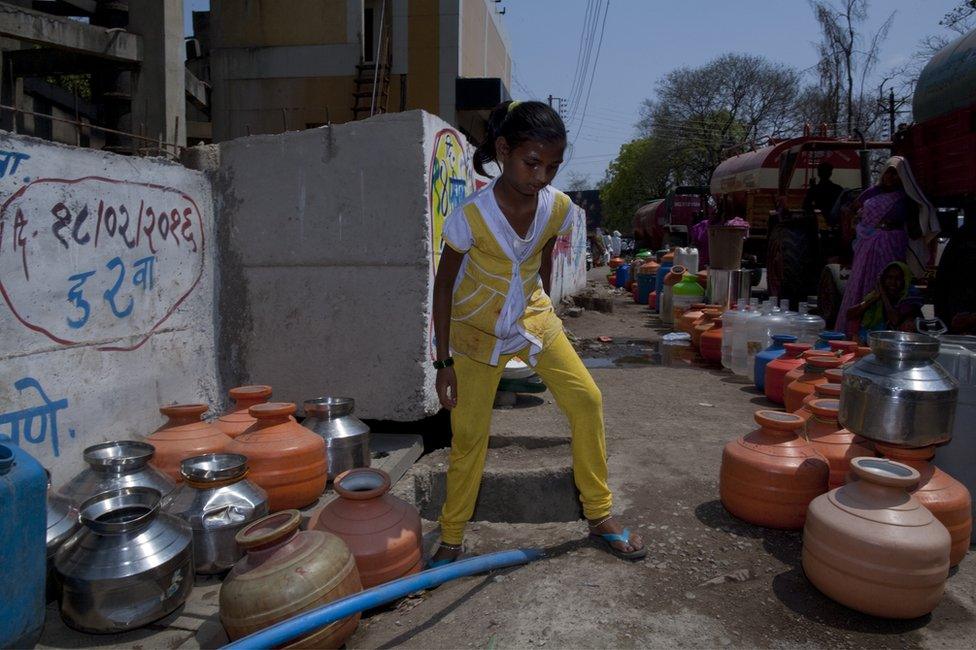
Anjali Patole is spending her summer holidays queuing up for water
It is 42C in the shade, but that doesn't deter 10-year-old Anjali Patole from queuing up every day near a water tank on a baking pavement in the city of Latur in the western state of Maharashtra.
Here, Anjali and her uncle - her father has migrated to Pune to look for work, and her mother is a vegetable vendor - will stand under the blazing sun for up to three hours to fill 150 litres of drinking water in 15 containers, a smorgasbord of shiny kitchen utensils and brightly coloured plastic tanks.
At home, the taps dried up three months ago. Every eighth day a municipal water tanker comes to her street, providing 200 litres of water to every family.
It's never enough for her family, so Anjali, frail and enervated, is spending her summer holidays collecting water in the soaring heat.
Aren't you afraid that she might suffer from a heatstroke? I ask her uncle.
'Compulsion'
Last week a 12-year-old girl died of heatstroke, external after spending four hours gathering water from a hand pump in the neighbouring Beed district. Anjali had already spent more than two hours when I met her.
The BBC's Yogita Limaye finds villagers risking their lives for water
The uncle shrugs off my question.
"Compulsion, compulsion," he mutters under his breath. "We don't have a choice."
The scarcity of water leaves people with few - and mostly awkward - choices. So it is with Latur's residents, who are among the 330 million people in 256 districts in India affected by drought, brought on by three years of poor rainfall.
Not surprisingly, the lives of half a million people in the district's main city now revolve around water. They worry about getting supplies, and mull their choices.
Will I wait for the tanker or head to the queue? Or should I check the hand pump down the street?
At home, the choices are no less onerous.
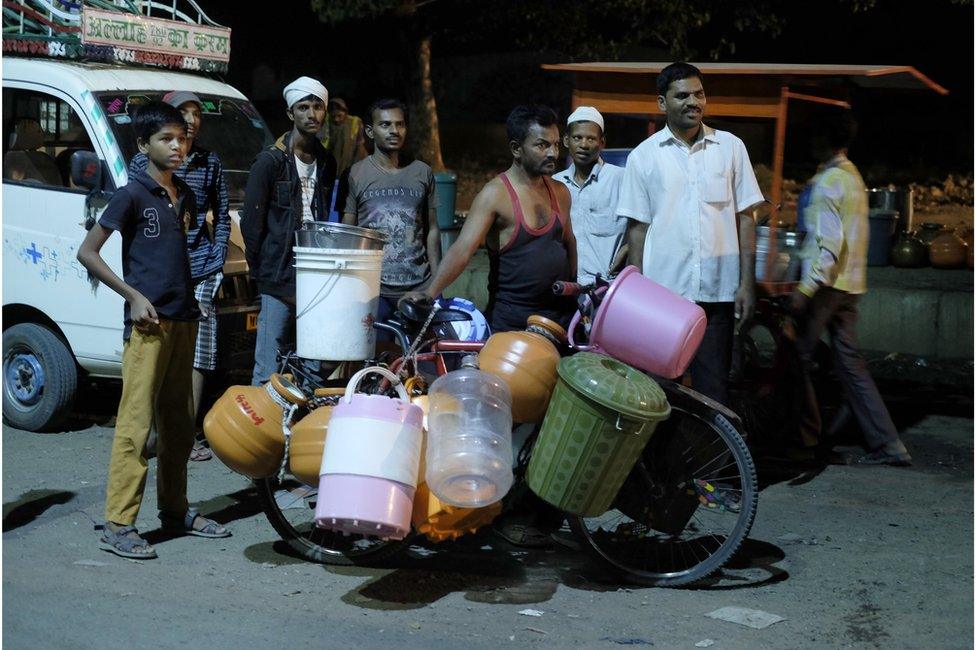
Sheikh Mainuddin comes to a water queue carrying 20 containers
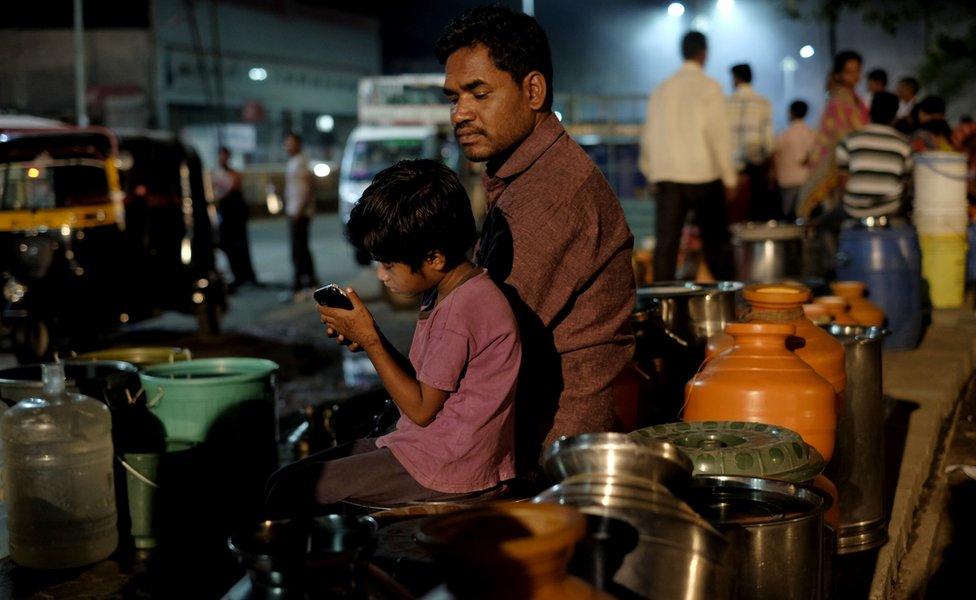
People wait in the queue all night to gather water
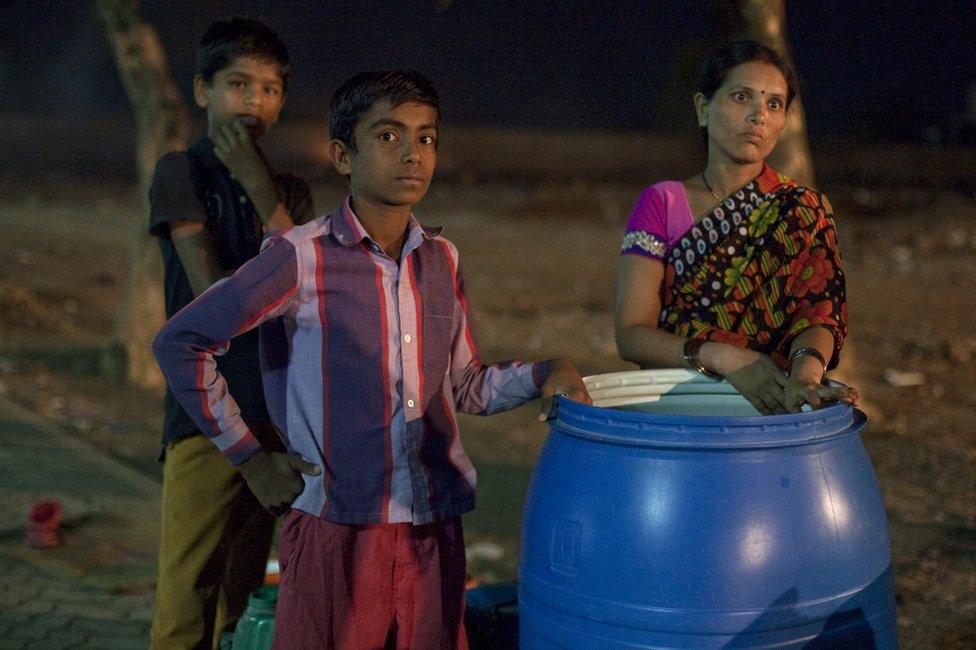
Should I take a second bath in the sweltering heat? Should I cook something that consumes less water? Should I invite friends for dinner? Should I postpone an operation, external to save money for water?
The oft-prophesised war of the 21st Century over water is already being fought in the minds of many here. The city is rife with rumour and suspicion.
Is a municipal councillor diverting more tankers to his constituency? Is my neighbour bribing the tanker driver and siphoning supplies?
In the fierce battles over water, two people - a volunteer managing a water queue, and a woman, exhausted by long hours in the queue - have reportedly died of heart attacks. People have come to blows in queues. To avert water riots, authorities imposed orders prohibiting large gatherings at water collection sites, external last month.
'New normal'
There have been protests outside storage tanks, prompting authorities to put spiky gates on the concrete spiral stairways to prevent people from scampering up. A main police station in the city is coping with up to 20 complaints from people squabbling over water.
"People are pretty worked up over water," says Sudhakar Boakar, a policeman who is in charge of the station.
The rich buy bottled water for drinking and private tanker supplies for cleaning and washing. The poor and not-so-well-off, spend most of their time waiting for municipality tanker supplies or queuing up outside storage tanks. "This has been the new normal for six to eight months now," says councillor Shailesh Swami. "Things worsened after the taps ran dry four months ago."
On a still, hot night, a long queue builds outside a storage tank in the heart of the city. The roads are deserted, but the wet pavement is humming with activity.
A steady stream of weary water hunters trickles in under flickering street lights. The containers - buckets, drums, bowls, pots, pitchers - squat in a queue of their own.
Around midnight, Rabindra Mirkale, a factory worker, riding a moped, arrives with his nephew and 12 containers.

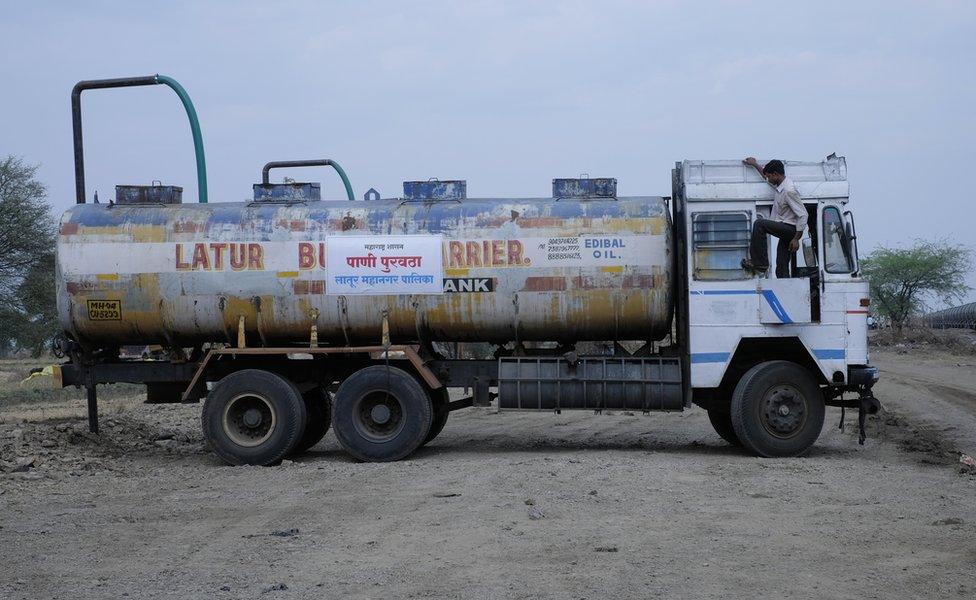
Latur has become a city of water tankers

The search for water can be long and arduous
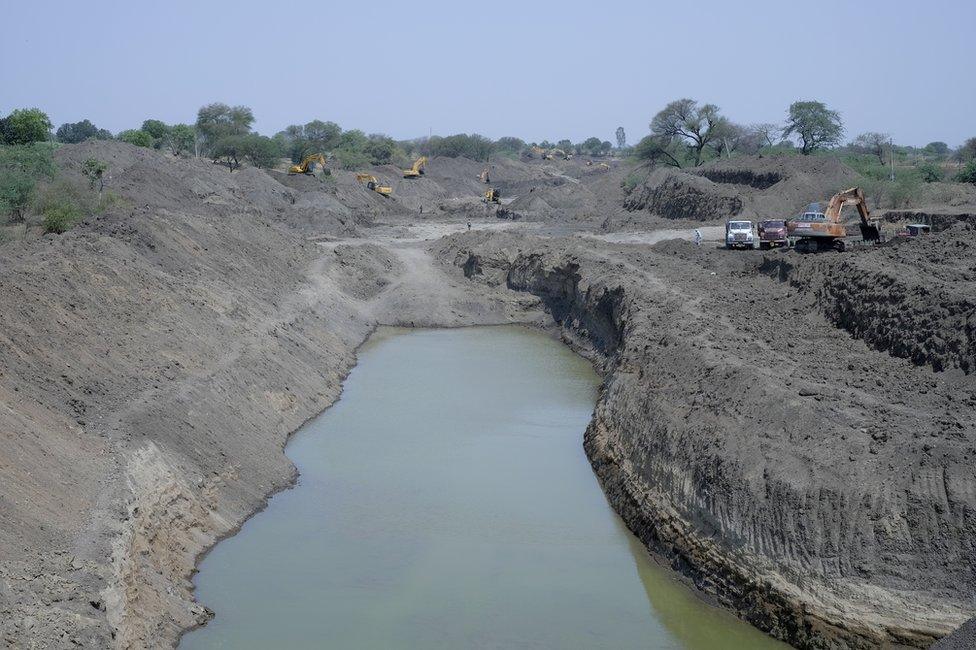
The main Manjara river supplying water to Latur has dried up
It is a minor miracle - the number of vessels Mr Mirkale yokes to his decrepit two-wheeler; hunting water, clearly, inspires jugaad, an Indian word that means ingenious improvisation in the face of scarce resources.
It's going to be a long night ahead. Mr Mirkale reckons he will get his 200 litres of water around daybreak, some six hours later. "I work all day and collect water all night. I have no life," he grins.
Now Sheikh Mainuddin arrives, dragging a bicycle carrying a staggering 20 containers. He's walked a kilometre in the sweltering heat. There are a dozen people in his house, he says, waiting for water. "The once-a-week tanker water is not enough."
There is tension as more people join the queue. An anxious mother awaits her turn, putting her child to sleep on top of a reservoir nearby. Rubbish burns on a landfill next to the tank, making the air hotter. Then suddenly, the transformer blows out, plunging the queue into darkness, completing a picture of urban dystopia.
'Difficult situation'
Authorities claim 125 tankers are ferrying drinking water to residents every day. Latur's senior-most official Pandurang Pole tells me at the peak of the water famine in February, the city was getting a quarter of its daily requirement of 25 million litres.
Two years of paltry rainfall has reduced the main Manjara river, which supplied most of Latur's water, to a gritty mass of silt and rock. Now, Mr Pole says, the city is managing to narrow the gap by securing nearly 20 million litres a day by scrounging from every available source: two dams, a barrage, 150 bore wells, reviving a defunct water supply scheme, and most importantly, the much-talked about water train, external. "It is a difficult situation," he says. "We now have stocks until July and are hoping for rains this year."
Outside the city, things are gloomier.
Tankers are supplying water to 150 of the 800 villages. Groundwater levels have fallen below 500ft (152m). Desperate villagers are clambering down wells looking for dregs of water.
Growing water-guzzling cash crops like sugarcane and cotton for years meant that the groundwater wasn't destined to last long in a drought-prone district of 4.5 million people. More than 30 debt-stricken farmers have taken their lives this year.

Municipality tankers supply water to homes in Latur

A train is bringing supplies of water to the city

Vikas Manikrao Sul is supplying water from his farm free to villagers
But there are also stories of hope in a cruelly arid landscape.
People, by and large, have been extraordinarily patient and resilient even as politicians score brownie points by sticking party posters on water tankers and taking credit for the water train.
'A shame'
Far away from the din, local people, goaded by the Art of Living Foundation, have already contributed 30m rupees ($450,113; £311,487) to dredge an 18km (11-mile)-stretch of the bone-dry Manjara, the district's lifeline. Twenty dredgers are working round the clock to finish the job.
"The drying up of the river is Latur's shame," says Mahadev Gomare of the group. "Nature has given us water. We should protect the sources."
A young farmer, who bought a bore well to irrigate his dry 10-acre farm and grow corn, has instead decided to supply water free to villagers for two hours every evening. "Crops can wait," says Vikas Manikrao Sul, 31, who's also a lawyer. "Providing water to affected families is more important. In times of scarcity, you should not think of profit."
In the long term, Latur has to conserve and harvest its water better, and change cropping patterns to avert a similar disaster. But, before that, it has to rain a lot.
"I always feel thirsty. Is that what happens to you when it doesn't rain for years?" says Shailesh Swami, looking up at the cloudless sky.